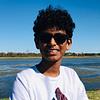Human life has a significant impact on bird life, health, and populations in a variety of ways. Birds are incredibly important to the world ecosystem - they help pollinate and spread seeds, they eat insects and other pests, their feces is a fertilizer for plants, and they help keep the world cleaner and reduce spreading diseases by eating carcasses - but they are significantly affected by humans. There are several ways that human behavior and actions negatively impact birds, but luckily there are a few solutions that will help reverse the problem we have caused.

Image Credit: Tina Nord from Pexels
Let us slide into your dms 🥰
Get notified of top trending articles like this one every week! (we won't spam you)Pesticides
One major impact that humans have had on birds is our use of pesticides and fertilizers in farming. Countless species of birds rely on plants, or on the bugs that live in plants, for food, and pesticides kill those plants, and those bugs, without regard for the birds that need them for survival. For example, in the 1950s and ‘60s, the use of a pesticide called dichlorodiphenyltrichloroethane (DDT), had a catastrophic effect on birds of prey. DDT was a chemical used on plants to fend off insects, such as mosquitoes, moths, or beetles, on crops and livestock.
DDT was consumed by animals and accumulated in the food chain, eventually reaching birds of prey. When birds consumed DDT, it caused them to lay eggs with extremely thin shells, so that when they went to incubate their eggs, they accidentally crushed them. As a result, those birds were unable to successfully reproduce, which caused a huge decline in bird populations. A well-known example of this was the American Bald Eagle, which was classified as an endangered species in 1967 in 48 states, largely due to the effects of DDT.
The Environmental Protection Agency banned the use of DDT in the United States in 1972, and many species of birds have recovered and restored their population since then. However, DDT is not the only chemical to have negative effects on birds. The summer of 2021 saw a huge surge in grasshopper populations, which led to the light use of a chemical called diflubenzuron to protect crops.
Many environmentalists worried that the chemical would eliminate an important food source for birds and eventually affect the entire food web. Fortunately, diflubenzuron has not caused major issues, but still the threat of pesticides certainly persists today.

Image Credit: Ensar* from Pexels

Take the Quiz: What Candle Scent Matches Your Overall Aesthetic?
Halloween is just around the corner. It's time to light that candle. Take this quiz and find out what candle scent suits you best.
Domestic Cats
Another significant threat to bird populations worldwide is domestic cats. Many cat owners let their cats roam outside, and those cats use their exceptional hunting skills to decimate local bird populations. According to the American Bird Conservancy, “Predation by domestic cats is the number-one direct, human-caused threat to birds in the United States and Canada.” Cats kill more than 2.4 billion birds each year just in the United States. Even a cat’s presence outdoors near birds can lead to health problems for nesting birds’ chicks and reduce the likelihood of nesting success.

Image Credit: ChiemSeherin from Pixabay
Glass Windows
Another issue birds face in the modern world is crashing with glass windows in cities and suburbs. Glass is something birds cannot see, so they often end up flying right into it. Oftentimes birds fly into reflective glass, which is common in office buildings and skyscrapers, because the bird sees a mirror image. Many people dismiss glass windows as an illegitimate threat, but according to the National Audubon Society, “...as many as 988 million birds die in building-glass collisions each year.”
With the advent of the Industrial Revolution, buildings with big panes of glass windows became increasingly common, especially in cities, so the rate of accidents has increased exponentially. Most collisions, however, occur with low or residential buildings under four stories, because they tend to reflect the trees and the sky.

Image Credit: MechaOwl from Pixabay
Plastic
Plastic pollution is yet another human-related threat to birds, seabirds especially. Tons of plastic end up in the ocean every year, often in the form of microplastics. Sometimes birds eat plastics directly, mistaking them for food, and even feeding them to their chicks.
In other cases, fish consume microplastics, and birds eat those fish. In either case, when birds consume plastics, it clogs their digestive system and has recently been proven to damage their brains in a way similar to Alzheimer’s.
How You Can Help
Fortunately, there are plenty of ways to help protect birds and reduce humans’ negative impact. Regarding the use of chemicals, people can use animal-friendly fertilizers or pesticides. Domesticated cats should ideally be kept indoors - not only does this protect birds, but it also protects cats from predators, cars, and other outdoor dangers.
Further, to prevent bird-glass collisions, people can treat their windows, such as adding a screen, stickers, or pulling down sheers or shades, so that birds can see them. Similarly, placing backyard bird feeders away from the house can decrease the chances of a bird crashing into windows.
Lastly, and most importantly, people can educate others on the human-caused threats to birds. Awareness is the first step to making progress on any issue, so the more people who know how to help protect birds, the better off they will be.
Read Ben Rose's article "From the Rainforests to the Seas, Birds Are Being Driven to Extinction. Why?" to learn more about climate change-related threats to birds.










